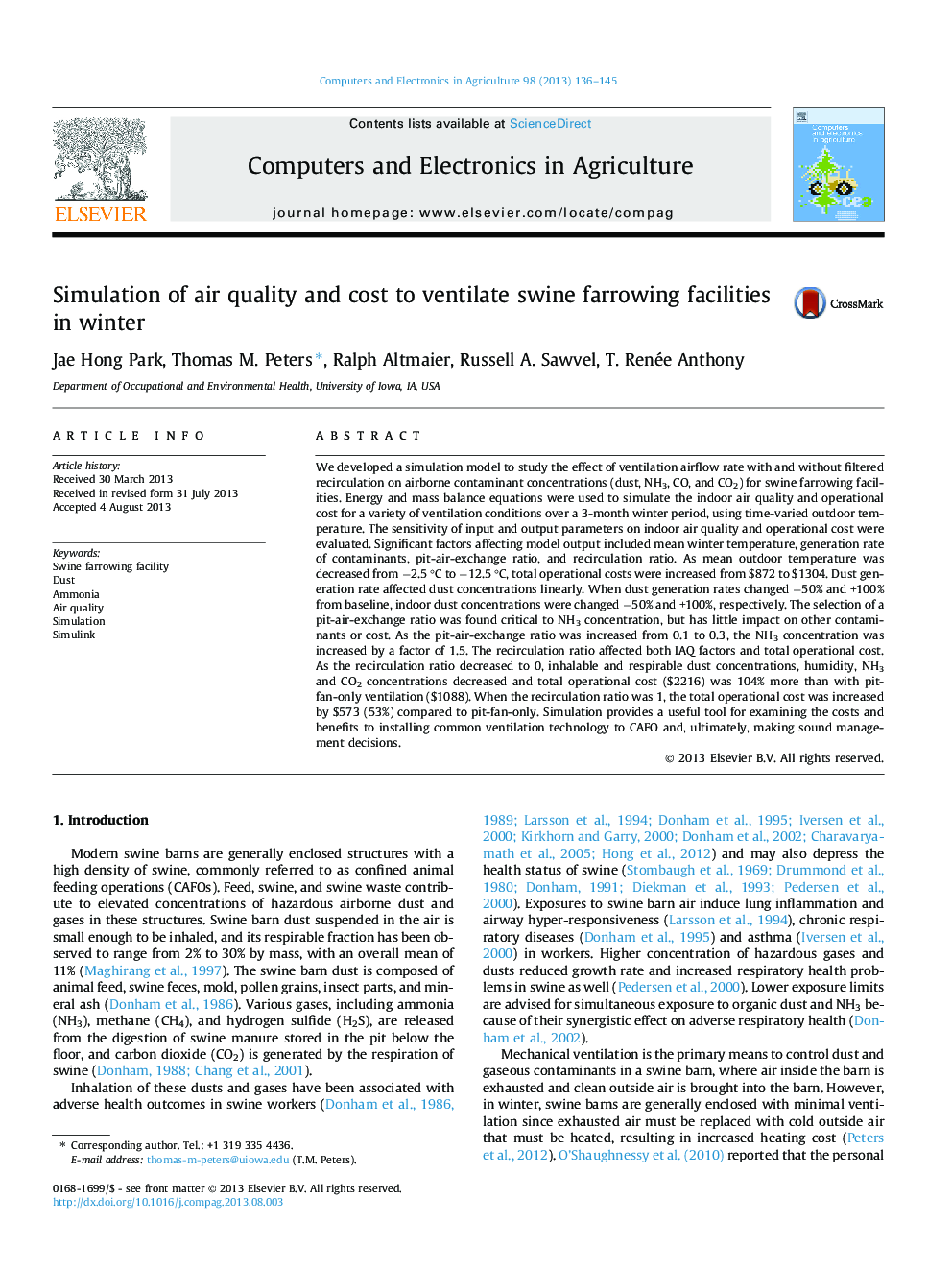| کد مقاله | کد نشریه | سال انتشار | مقاله انگلیسی | نسخه تمام متن |
|---|---|---|---|---|
| 84625 | 158894 | 2013 | 10 صفحه PDF | دانلود رایگان |

• Model developed to simulate the effect of ventilation on indoor air quality in swine facilities.
• Various ventilation scenarios studied for farrowing facilities in winter.
• Filtration with recirculation found more cost effective than pit-only ventilation.
• Model useful to optimize costs/benefits of ventilation in animal rearing facilities.
We developed a simulation model to study the effect of ventilation airflow rate with and without filtered recirculation on airborne contaminant concentrations (dust, NH3, CO, and CO2) for swine farrowing facilities. Energy and mass balance equations were used to simulate the indoor air quality and operational cost for a variety of ventilation conditions over a 3-month winter period, using time-varied outdoor temperature. The sensitivity of input and output parameters on indoor air quality and operational cost were evaluated. Significant factors affecting model output included mean winter temperature, generation rate of contaminants, pit-air-exchange ratio, and recirculation ratio. As mean outdoor temperature was decreased from −2.5 °C to −12.5 °C, total operational costs were increased from $872 to $1304. Dust generation rate affected dust concentrations linearly. When dust generation rates changed −50% and +100% from baseline, indoor dust concentrations were changed −50% and +100%, respectively. The selection of a pit-air-exchange ratio was found critical to NH3 concentration, but has little impact on other contaminants or cost. As the pit-air-exchange ratio was increased from 0.1 to 0.3, the NH3 concentration was increased by a factor of 1.5. The recirculation ratio affected both IAQ factors and total operational cost. As the recirculation ratio decreased to 0, inhalable and respirable dust concentrations, humidity, NH3 and CO2 concentrations decreased and total operational cost ($2216) was 104% more than with pit-fan-only ventilation ($1088). When the recirculation ratio was 1, the total operational cost was increased by $573 (53%) compared to pit-fan-only. Simulation provides a useful tool for examining the costs and benefits to installing common ventilation technology to CAFO and, ultimately, making sound management decisions.
Figure optionsDownload as PowerPoint slide
Journal: Computers and Electronics in Agriculture - Volume 98, October 2013, Pages 136–145